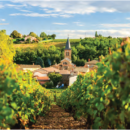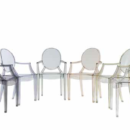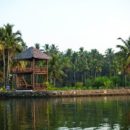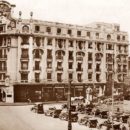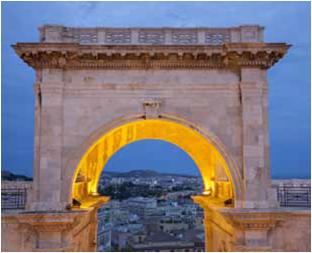
Cagliari, Lecce, Matera, Perugia, Ravenna, Siena – Where do you place your bet?
The program “European Capital of Culture” was initiated by the Council of Ministers of Culture of the European Community in 1985, at the initiative of Melina Mercouri, Greek Minister for Culture, aiming “to celebrate the contribution of cities to the development of culture”. For year 2019, six Italian cities compete for the title.
Over the years, the popularity of the program grew along with its influence to cultural, social and economic development, increased by the growing number of tourists attracted. Italy has an unusually high number of candidates this year.
By comparison, Marseille ultimately muscled out seven other French cities to become the capital for 2013 while only three cities in the Czech Republic vied to be the capital in 2015. The glut is not surprising in a country where the notion of “campanilismo” — denoting a proud attachment to one’s hometown — runs deep.
Several of the cities now competing for the title can even boast of having once been the capitals of sundry duchies, principalities, maritime republics.
CAGLIARI
Cagliari, the capital of Sardegna, is located at the heart of the beautiful Bay of the Angels and like Rome, it was built on seven hills, which identify the historic neighborhoods of the city. Founded by Phoenicians and often referred to as the “City of the Sun”, Cagliari is located on the southern border of the island.
Besides its crystal-clear sea and one of the most beautiful and longest beaches in the Mediterranean, Cagliari offers an unspoiled natural environment consisting of lagoons, bird sanctuaries, and wildlife reserves; not to mention some interesting medieval architecture and archaeological wonders left behind by different cultures. Il Poetto is Cagliari’s most popular stretch of beach, and the historic “old town” (Castello) has an appealing North African character.
The Duomo (a massive Gothic cathedral) was constructed by the Pisans during the second half of the 13th century, dedicated to the Virgin Mary and St. Cecilia and modeled after the one in Pisa. Today, Cagliari maintains the energy of a modern European city, with chic boutiques, and the island’s largest university. The Roman Amphitheater offers a continuous programme of live theater, musical, ballet and dance shows, martial arts, opera, and concerts in July and August.
LECCE
For a long time now, Lecce was considered an Italian city too far. But maybe that’s exactly what saved this delightfully tourist-free town. Lecce sits at the bottom of the boot (the Salento peninsula), in the Puglia region. You won’t find many natives speaking English, unless you meet Helen Mirren, who has a castle nearby. Lecce is incredibly foreign to the larger public despite being known as “the pearl of the Baroque”.
Built largely in the 16th and 17th centuries, it is obviously representative to an era when piling up on the decorations was only able to add more power, wealth and beauty. Buzzards, putti, wolves, Saracens in turbans — it’s an ornamental plethora. The Leccese stone, from which the town is built, is so soft you can carve it with a spoon – the masons soaked it with milk to set it hard. The result is a city of golden honey hues.
MATERA
Currently a city of 60,000 inhabitants, with a unique legacy that frames a remarkable setting of almost 10,000 years of continuous human occupation, Matera is one of the oldest living cities in the world in terms of continuity. You can find older cities in Mesopotamia, but they have not been occupied in modern times. Where else can you now sleep in a room which was first occupied 9,000 years ago?
Estimates of the earliest occupation of the site vary, but archaeologists have found artifacts in local caves dating to the Neolithic period and even earlier. Here, the history of urban ecology, from sustainability to squalor, inspired UNESCO to designate it a World Heritage Site, while its old Jerusalem-like aura captured several movie directors, including Mel Gibson, who used Matera to film The Passion of the Christ. Several caves have been carefully restored, parts as museum, but most as proper homes, or as holiday homes, small businesses, hotels and B&Bs.
PERUGIA
Perugia, rises up in the center of Italy, with its five historical quarters closed-in by its Etruscan town walls: enormous bastions formed by gigantic square masses, built more than 22 centuries ago, with long stretches still visible. When the city of Rome was a little more than a camp of huts, theEtruscan Perugia had seven Gates to the city, including the particularly great Porta Pulchra. Even the shortest visit to this center of art, history and culture must not overlook the complex of San Francesco and the Oratory of San Bernardino.
Among the most important events taking place in the city are the musical festival Umbria Jazz and the gastronomic festival Eurochocolate. Also, especially for children, is the City of Sunday, the first entertainment park in Italy!
SIENA
Not only one of the most fascinating towns in Tuscany but also set in a particularly beautiful position, Siena preserves its medieval character to a remarkable degree, and has been largely unspoilt by new constructions. Its beautiful Gothic buildings include the Cathedral and Palazzo Pubblico, as well as numerous churches. The Campo is one of the most remarkable squares in Italy. The seventeen “Contrade” – wards into which the town is divided – still play an active part in the city life, culminating in the famous Palio horse race, maybe the most spectacular annual festival in Italy, where the entire city participates.
The town is built on a Y-shaped edge and spreads into the adjacent valleys; the streets are therefore often steep, and to pass from one part of the city to another you may have to cross a deep valley. The town offers a varied panorama, which includes Monte Amiata and the metalliferous hills, as well as the clay downhill of Asciano and the wooded district of Montagnola. To the North, the scenery changes once again, with the densely cultivated hills of the Chianti


